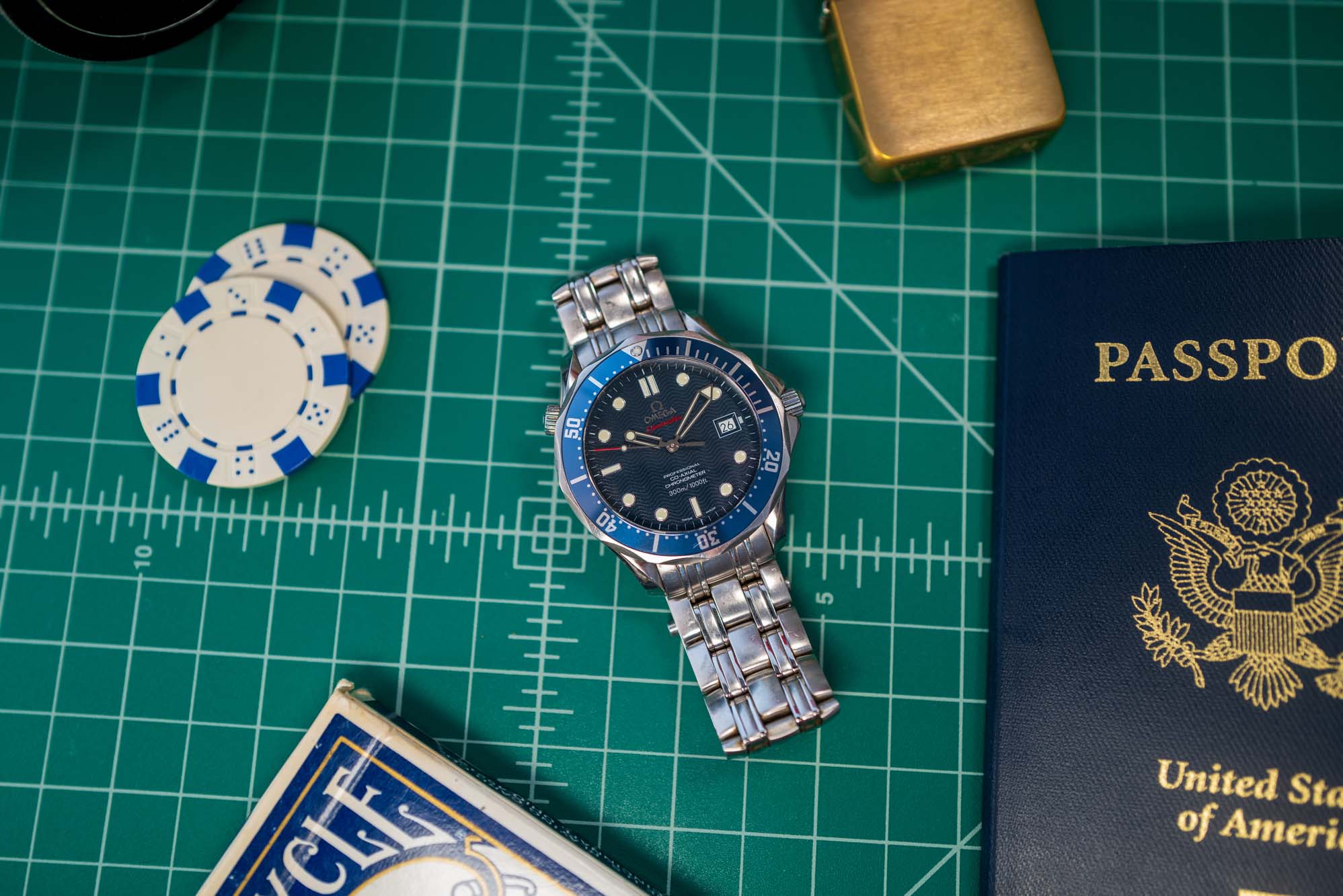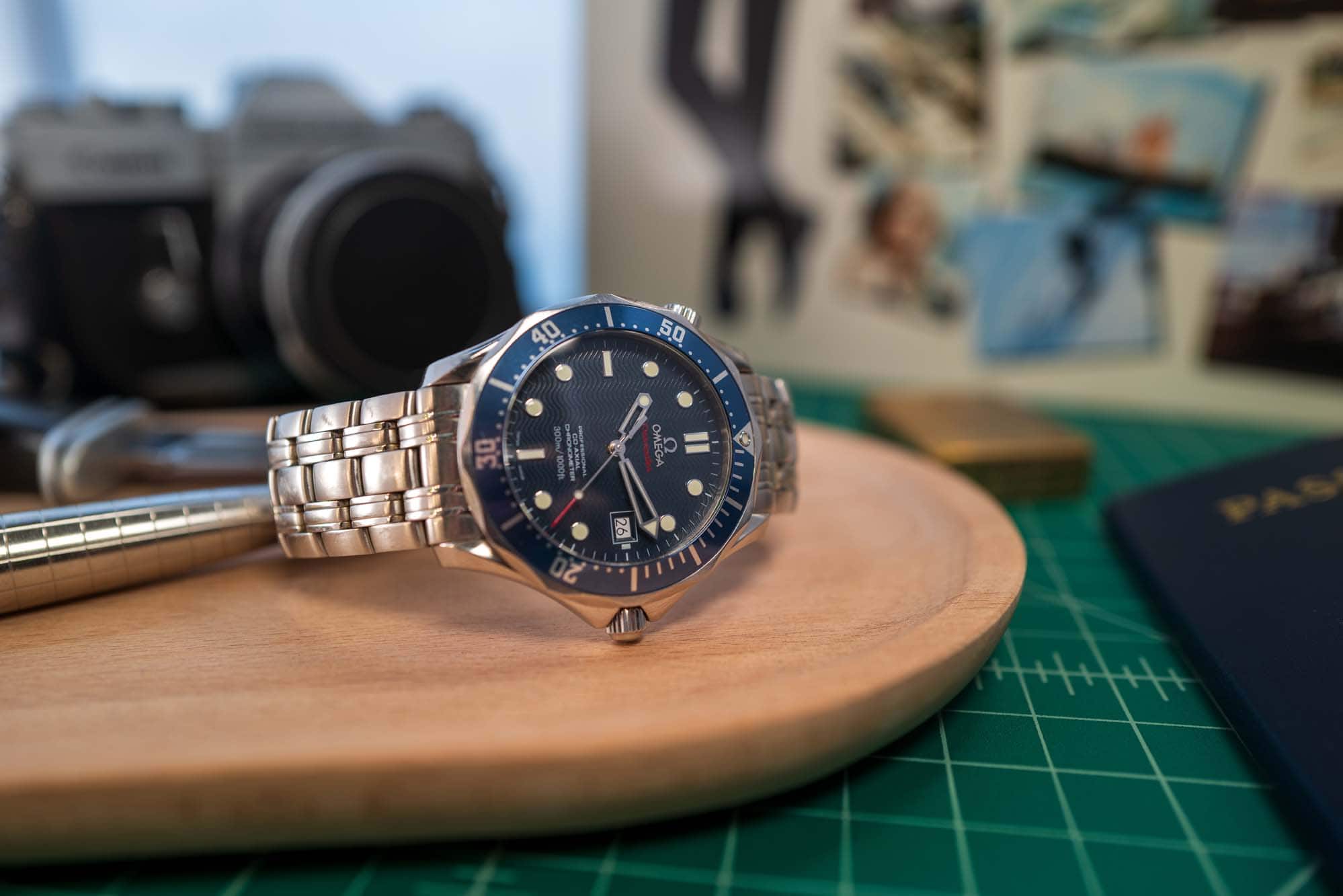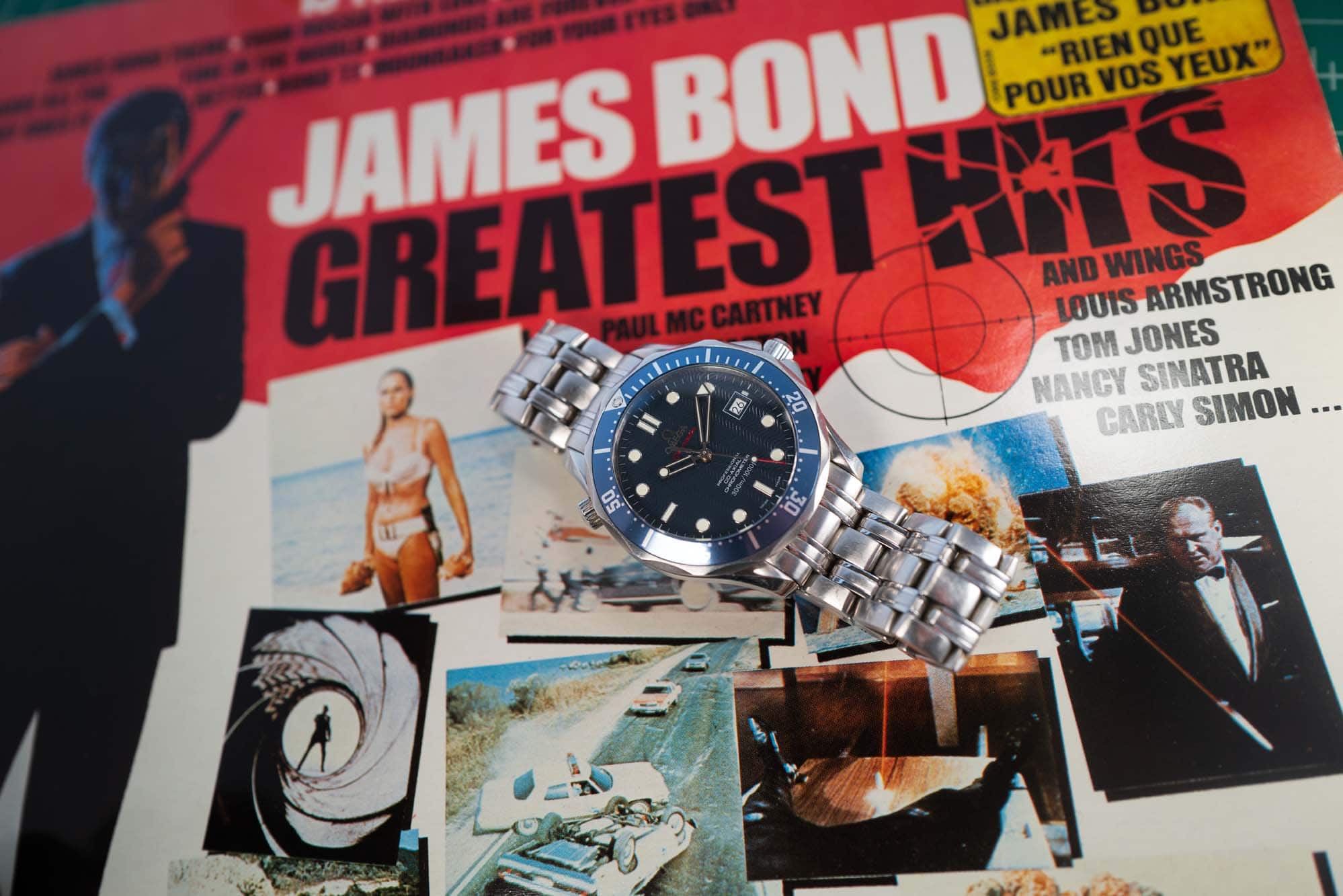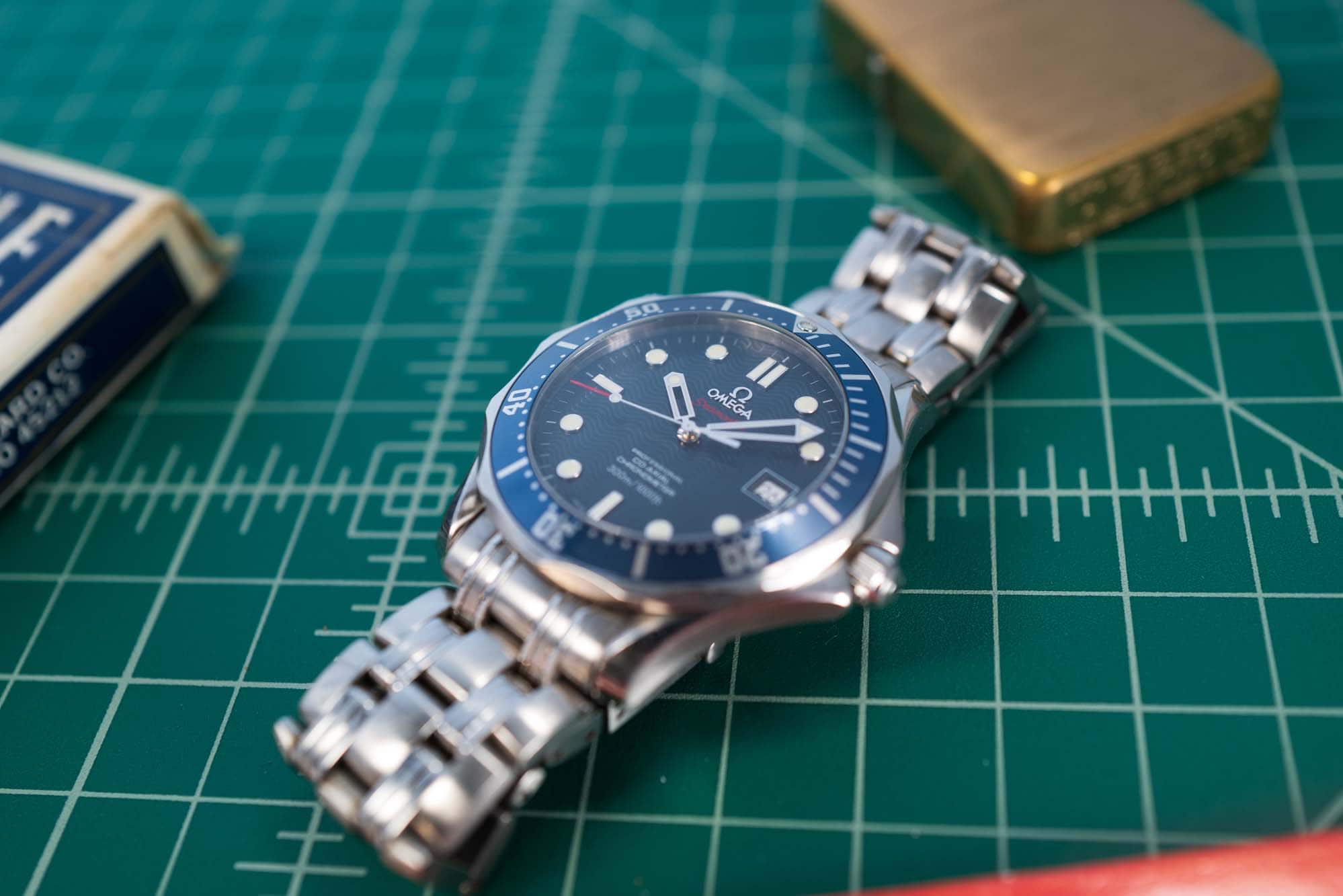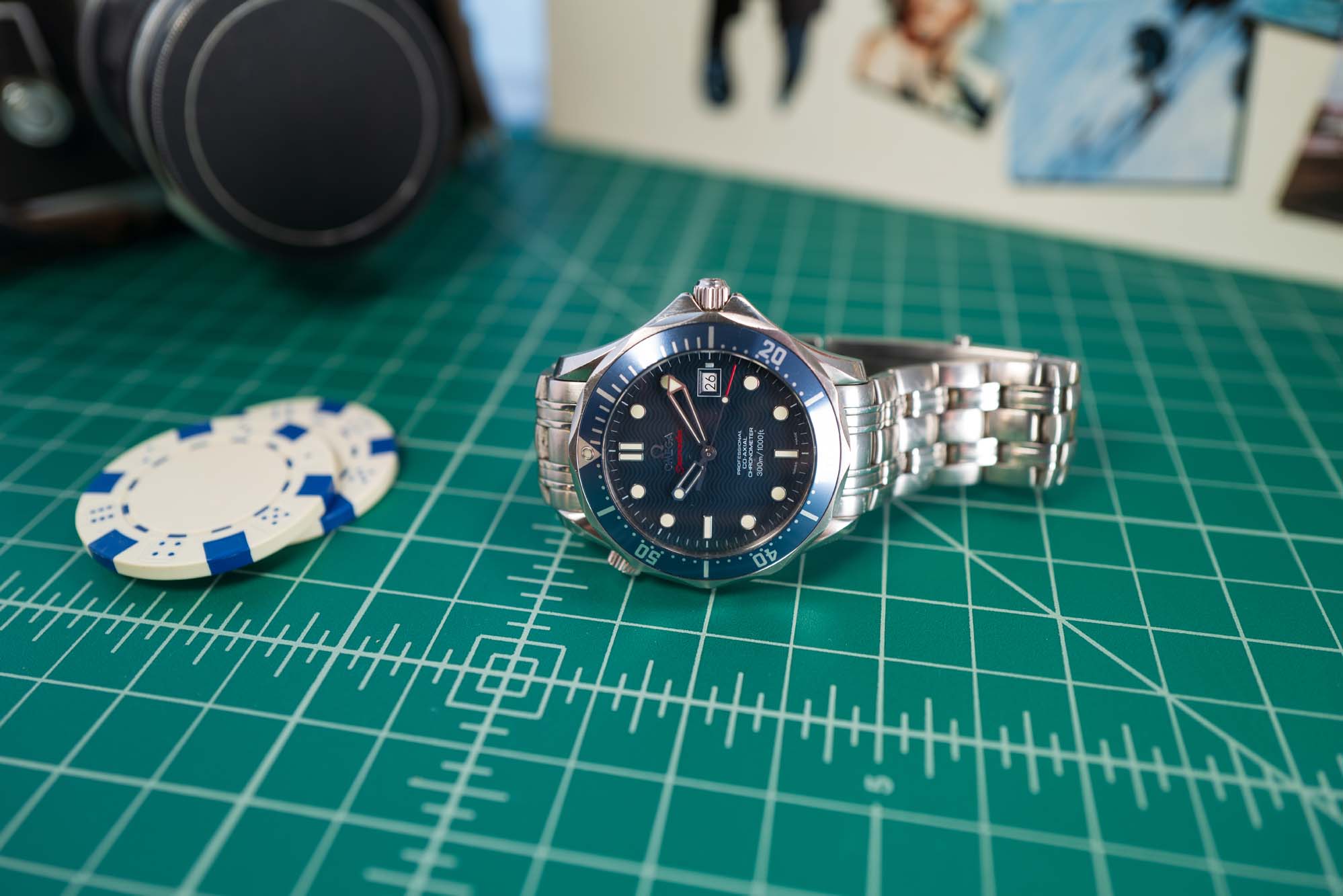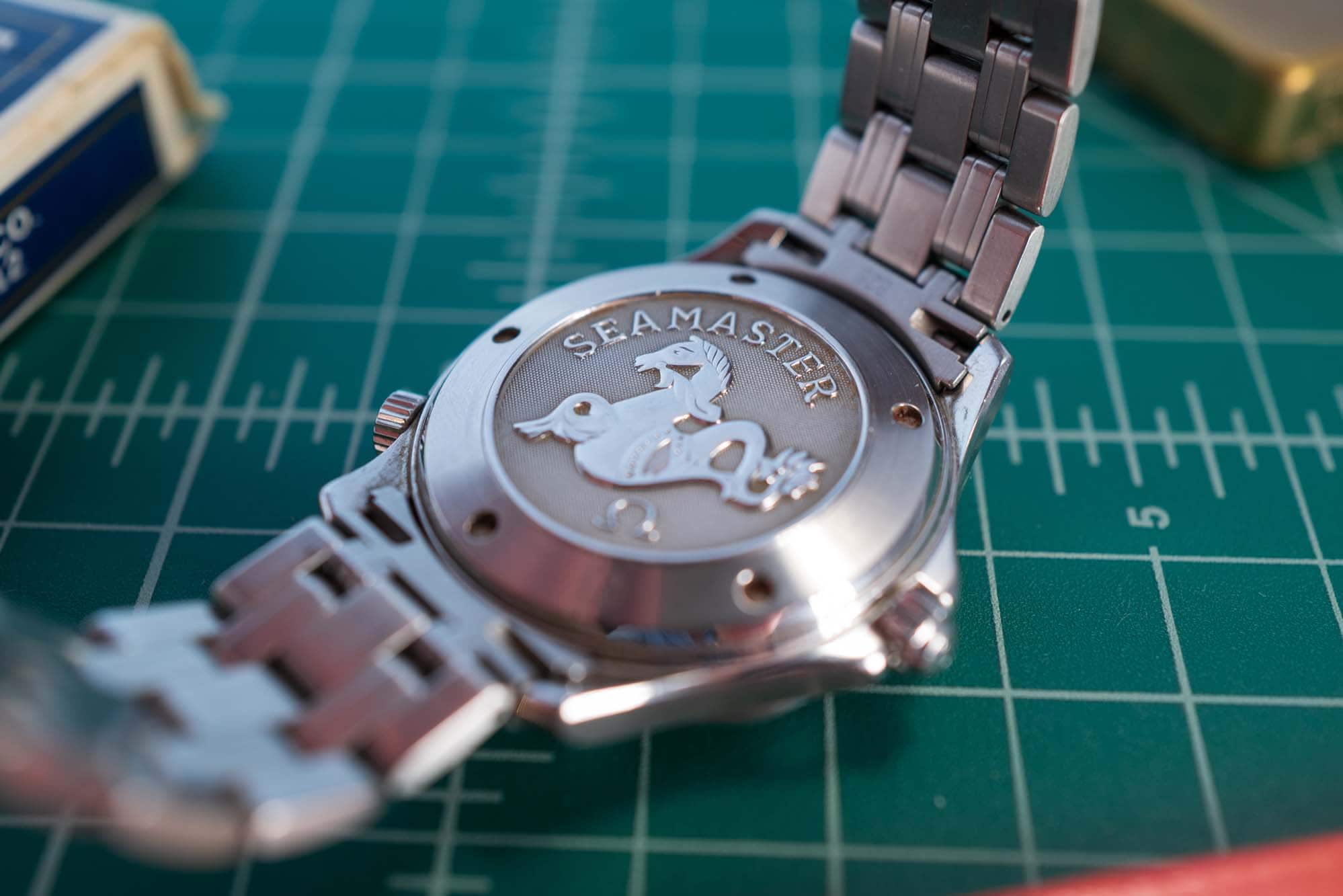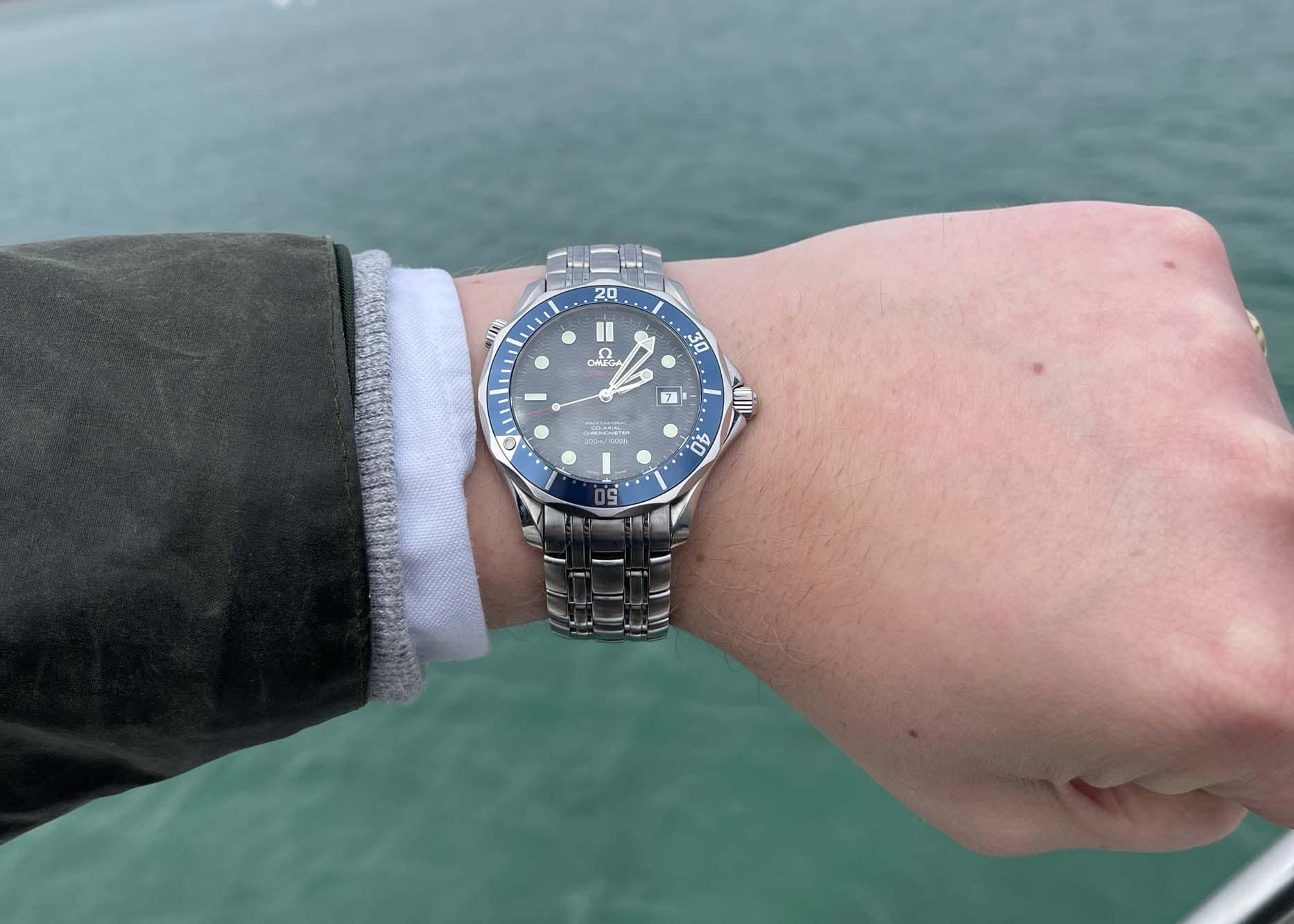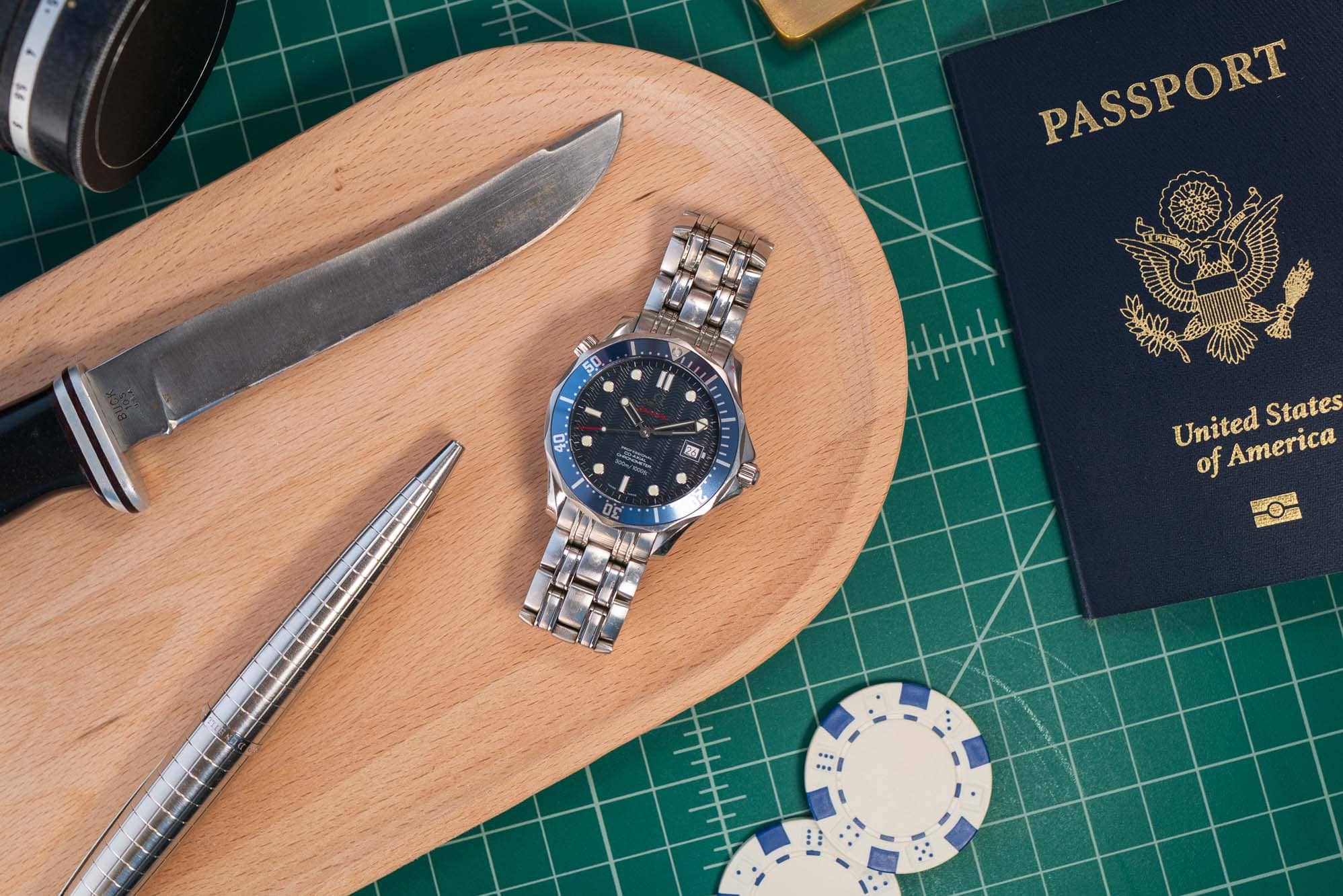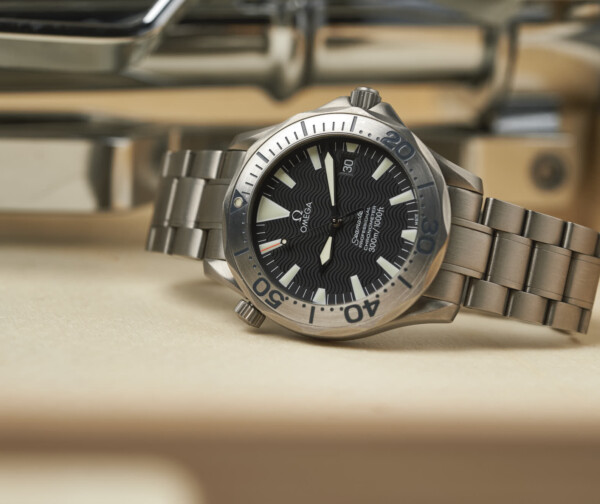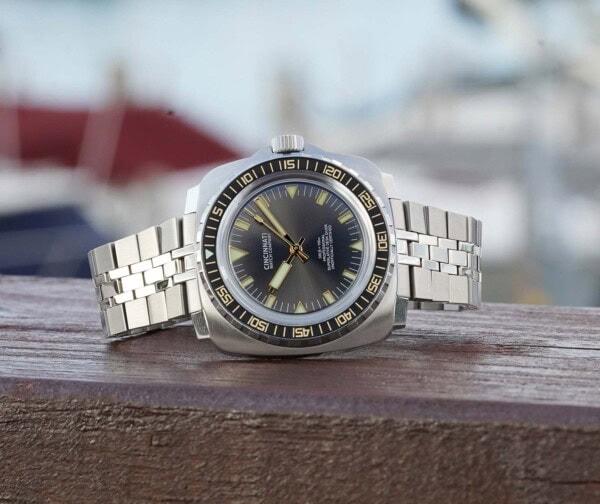Still, I’d hold my Seamaster up against any other — though I admit I’m incredibly biased here. In general, I try to evaluate watches relatively objectively, measure them up against similar competitors, and keep a reasonably up-to-date tally of both their successes and failures, big or small. But I fell in love with this Seamaster a full decade before I ever owned one, and it was not a watch I considered rationally before I bought it. This was a watch I had loved and admired unconditionally, and it was always going to be my first “luxury” watch purchase — quirks and foibles be damned.
There are Bond watches, and there are Bond Watches… This is the latter.
Like so many people, my first experience with Omega was on screen. When I was in high school, my friends and I used to borrow movies from our school library and project them in a small theater space on campus on Sunday afternoons. We watched all sorts of things over the years — Miyazaki films were a particular favorite — but we absolutely devoured Bond movies. Those Sunday afternoon movie marathons were my first real experience of James Bond outside the monster marathons that used to run on Spike TV, and I was enamored; by the clothes, the travel, the adventure, and especially by the watches.
It probably didn’t help that all this roughly coincided with my initial tumble into watch enthusiasm, spurred on by a 13th birthday gift from my godfather. Naturally, I wanted a Bond watch desperately. I mean, Bond was the coolest guy on screen, surely the watches he wore must be the coolest watches off-screen as well? The only question left was which one to get. Thankfully, Bond has inspired multiple generations of imitators and devotees, many of whom (myself included) have taken to the internet to expound on even the smallest details found in the films, so there were more than enough resources available to let me obsess over Bond’s many theatrical watches, going all the way back to the very first one — not a Rolex Submariner, but a gold-filler Gruen Precision 510.

Still, I quickly settled on the Seamaster for a few reasons. For one thing, it doesn’t take long to figure out that a vintage big-crown Sub is probably out of reach for most teenagers. A relatively contemporary Omega was probably a more attainable dream. Besides, the Bonds I grew up with wore Omega, and they wore it well, so there was no question that what I wanted on my wrist was a Seamaster diver.
In the end, it took me about a decade to finally get my hands on my Seamaster. As I mentioned at the beginning, mine is a ref. 2220.80.00 Seamaster. It’s not exactly the model most people think of when they think ‘Bond Seamaster,’ but it is, by every definition, exactly that. An evolution of the iconic 2531.80 worn by Pierce Brosnan through most of his run as Bond, the 2220.80.00 has everything you would want out of the classic Bond Seamaster, plus some small updates here and there that add up quickly to make the watch feel like a substantive improvement over its predecessor. And it was in Casino Royale, which is, to this day, probably my favorite Bond film.
Released in 2006, the 2220.80.00 came at an interesting time for Omega and has always struck me as somewhat of a transitional model for the brand, bridging the gap between Omega as it existed in the ‘90s and the Omega of today. It came a year after the release of the first-generation Planet Ocean and was the second dive model, and one of the earliest Omega sports watches, to integrate a Co-Axial escapement into its movement.

Visibly, not much changed between the 2531.80.00 and the 2220.80.00. The 2220.80.00 retains the aluminum bezel and small wave dial of the early model, as well as the familiar dial layout and skeleton hands. Of course, even here, there are subtle changes. Unlike on the earlier Bond Seamasters, the markers on the 2220.80.00 are applied with white gold surrounds, rather than painted. The skeleton hands are also rendered in white gold, with slightly reworked proportions — the longer hour hand, in particular, stands out as a welcome change — and, like the markers, the Omega logo is also applied here. The dial text is also revised, with the Seamaster word mark moved to the top half of the dial and painted in red to match the tip of the second hand.
The impact of these myriad changes is subtle but significant, and the more I dove into the world of Seamasters, the more important they felt. Still, and especially when compared with newer generations of the Seamaster Diver 300M, this watch retains a lot of the neo-vintage charm of its earlier equivalent, just with a modern touch — one that helps the watch avoid feeling dated.
A Totally Objective Review
Now, I love this watch unconditionally. I bought this before I ever worked in this industry, and my Seamaster will stay on my wrist long after I leave it, but it wouldn’t be fair of me to talk about how much I love this watch without addressing some of its issues, which, though all small, can be a dealbreaker for some. First off, the Omega Seamaster Diver 300M 2220.80.00 uses a Co-Axial caliber 2500, an Omega-developed caliber based on the ETA 2892, and modified to fit George Daniels’s Co-Axial escapement.
The 2500 series was one of the earliest Co-Axial movements mass-produced by Omega, and it had some teething problems. Early cal. 2500–equipped watches (specifically those with 2500C movements) often left the factory over-lubricated, which — in relatively rare cases, but enough to notice — could cause the movement to gum up and stop. Co-Axial calibers, by design, require less lubricant than conventional Swiss lever escapement equivalents, and it took Omega a few years to sort out some of the challenges associated with the industrialization of the novel escapement.

If you do happen to have a 2500C movement, don’t worry. If you haven’t had issues yet, it’s unlikely you will, and if you have had a problem, it’s an easy fix that can be corrected with a simple service. Still, if it’s something you’re worried about, you can just do what I did and find a 2220.80.00 from later in the watch’s production cycle. These were shipped with D-series caliber 2500s, and don’t suffer from issues reported with the earlier movements. Either way, the 2500 series, in my experience, is an excellent and reliable movement that both keeps excellent time and holds up to serious wear and tear (bordering on abuse).
Two of the most often cited pain points of the Seamaster Diver 300M are the bezel and the bracelet, each of which are carryovers from the earlier generation of Seamaster. While I mostly enjoy both the bezel and bracelet of the 2220.80.00, they do each have some persistent issues that can, depending on the person, rise to the level of serious grievances.
To start, the scalloped bezel, though iconic and a clear differentiator, is probably not an ideal design for a dive bezel. In practice, it’s notoriously inconsistent, and I don’t quite know why. The action of the 160-click bezel is crisp and precise, but that doesn’t matter if you can’t use it, which sometimes, and seemingly randomly, you can’t. At times, I have absolutely no trouble at all spinning and interacting with the bracelet, other times, I can’t get a grip no matter what I try and it’s a clear mark against this reference as a tool watch. That said, this is a watch meant to bridge the gap between technical dive watches and dressier luxury options, and there’s no doubt it accomplishes that. But if what you want is a function-first tool watch, this ain’t that.
The bracelet is another divisive point of the Seamaster Professional. A lot of people seem to hate it just on its face, and I’ll admit, the multi-linked, multi-finish design of the Seamaster’s bracelet is… a lot. But this is a watch squarely born in the ‘90s, and the bracelet is solidly of the era. I’d also go as far as to say that without this bracelet, the Seamaster loses a not-insignificant chunk of its personality. Of course, like so many things from the ‘90s, an abundance of personality doesn’t mean there aren’t problems lurking.

The bracelet is solid. It has zero play, and the clasp is long and robust, with a satisfying click when it snaps shut. There is a diver’s extension built into the clasp, but I’m not sure I or anybody else has ever used it. Unfortunately, that extension is the only adjustability to be found in the bracelet. There’s no on-the-fly micro adjustment here, nor are there even multiple mounting points in the clasp that would give some room to adjust after the fact. What you do get are a handful of half-links, that are great for dialing in fit, but time-consuming to use.
The Seamaster 2220.80.00 still used pin and collar connections between links, with two collars fitting into the intermediary links. It’s finicky and easy to get wrong. Still, if and when you do get the fit dialed in, the bracelet drapes beautifully. The lack of taper and the very long clasp will be a sticking point for some people, but on my 7.5” wrist, it’s incredibly comfortable, even if I have to adjust it two or three times a year as the seasons and weather change.
The bracelet itself terminates in two solid end links, and they’d be the one thing I would change on this watch. One of the Seamaster’s standout design details are the twisted lyre lugs, and the shape of the end links clash hard with the elegantly curved lugs. The end link juts out oddly both above and below the lug, and it’s hard to miss once you’ve noticed. Still, the watch is exceedingly comfortable. It’s compact, sits close to the wrist, and is not even remotely delicate — I am absolutely certain this watch will stay in place, whether I’m flipping Aston Martins in the French countryside or helping my grandparents with some gardening.

Broadly speaking, the 2220.80.00 will feel familiar to anyone who’s handled any Seamaster Diver 300M produced since 1993. The 2220.80.00 retains the 41mm case of the 2531.80.00, though it is slightly thicker at 12.7mm, thanks to the inclusion of its Co-Axial caliber. Still, it’s over a millimeter thinner than the current generation Seamaster Diver 300M and wears far smaller. Actually, with a lug-to-lug around 47.5mm, the 2220.80.00 wears much more like a 38 or 39mm diver than its actual 41mm diameter would indicate.
A Competitor Emerges
I got my Seamaster in 2020, nearly a decade after its discontinuation, and I bought it, quite deliberately, in place of the current generation of the same watch. Contemporary Seamasters are nothing to shake your head at, but to my eye, they’ve lost a lot of the charm older versions of the watch boasted.
I don’t generally love the most modern versions of iconic watches. The last fifteen years or so have seen watches get shinier and, for lack of a better word, more luxurified. Rolex and Omega have been among the worst offenders (though are far from exclusive members of the club). Admittedly, this is my own bias — my taste skews towards 5-digit Rolex and an earlier generation of Omega, and away from abundant use of polished ceramics. But the latest Seamaster is the first one since mine that has really caught my attention.

The return of the aluminum bezel and small wave dial are huge improvements, and the choice to drop the date was a good one, though I’m sure there will be plenty who disagree with me on that front. I finally got to spend some quality time with that Seamaster, and I gotta say, I came away thoroughly impressed, and with two takeaways: First, I’d still take my Seamaster every day of the week. Second, I’m not sure how long that will be true.
Is it enough to just say James Bond and move on? Omega


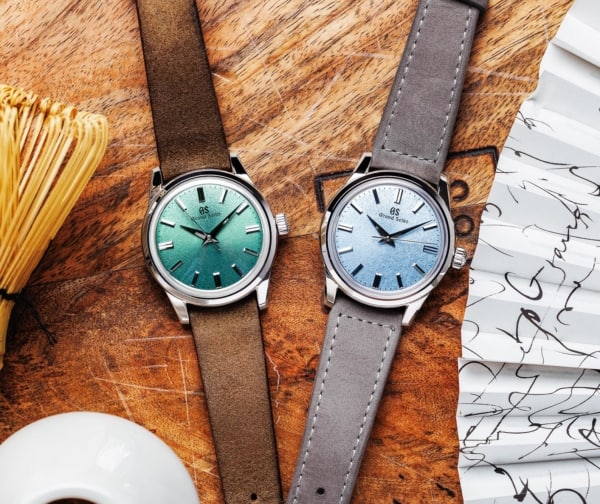






 Featured Videos
Featured Videos




